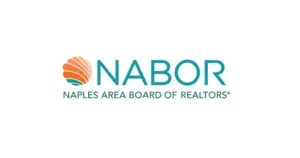I hear the same questions from new agents and confused clients every week. “Why isn’t this house on Zillow?” or “I thought the MLS had everything?” These myths about Multiple Listing Service platforms aren’t just annoying. They’re costing agents deals and leaving clients in the dark about how real estate actually works.
Let’s clear up the most significant misconceptions floating around the industry.
The MLS Doesn’t Actually List Every Property
Here’s something that surprises experienced agents: about one in ten homes in Canada sells without ever hitting the MLS. Similar numbers appear across U.S. markets, especially in hot neighborhoods where inventory moves fast.
Pocket listings and off-market deals exist for real reasons. Some sellers want to test pricing without public exposure. Others need confidentiality (think celebrity homes or messy divorces). A few just want to avoid the chaos of showings and open houses.
What this means for your business:
- Network beyond your MLS board. That relationship with the agent down the street? It might unlock inventory that your buyers can’t find online. This myth underscores the importance of building a strong network and maintaining good relationships with other agents, as it can provide access to off-market deals and pocket listings. Ask sellers if they’ve heard about off-market opportunities in their building or neighborhood.
- Don’t promise clients you’ll show them “everything available.” Instead, show them everything publicly listed.
The agents who close the most deals aren’t just searching the MLS. They’re working phones, attending broker opens, and staying connected to their sphere.
MLS Data Beats Public Portals for Accuracy
Think the MLS is slow and outdated? The opposite is true.
Canada’s Data Distribution Facility updates an average of 46 times per day. U.S. MLS boards typically require status changes within three business days, and they’ll fine you if you don’t comply. That’s why when you mark a property ‘pending’ or ‘sold,’ it better be accurate. This myth highlights the superior accuracy and timeliness of MLS data compared to public portals, reinforcing the value of the MLS in providing reliable information to agents and clients.
Meanwhile, consumer sites lag. Realtor.com refreshes every 15 minutes in some markets. Redfin runs near real-time. Zillow and Trulia update multiple times daily, but can show delays. Even in tech-forward markets like Toronto, updates take 2 to 24 hours to hit the public portals.
The takeaway? When buyers ask why they’re seeing different information on Zillow than on your MLS printout, it’s usually a feed delay, not an MLS problem. Your direct access gives you the most current data available.
Consumers Can Access MLS Data (Just Not All of It)
The “secret MLS database” myth needs to die. Participating brokers make listing information available to consumers for free through their websites. That’s not a courtesy. It’s policy.
What the public doesn’t see: seller contact info, showing instructions, internal broker notes, and detailed compensation structures. These details stay private for security and business reasons.
Most MLS listings get syndicated to Zillow, Realtor.com, and similar portals. Your clients are already browsing this data. They just don’t have the context, market analytics, or professional interpretation you bring. Your role in providing this interpretation can make you feel appreciated and integral to the process.
Being on the MLS Doesn’t Guarantee Anything
Listing exposure matters, but it’s not magic. This myth emphasizes the need for agents to go beyond simply listing a property on the MLS and to focus on effective marketing and pricing strategies to ensure a successful sale.
Sellers who skipped the MLS left over $1 billion on the table in 2023-2024. In California alone, off-MLS homes sold for an average of $30,075 less than comparable MLS listings. That’s real money walking away because of limited exposure.
But here’s the catch: plenty of MLS listings still underperform. Poor marketing and overpricing kill deals even with maximum exposure. I’ve seen gorgeous homes sit for months because the photos looked like they were taken on a flip phone from 2008.
What actually moves properties:
- Pricing that matches current comps, not wishful thinking
- Professional staging and photography that make buyers want to schedule showings
- Strategic marketing across social media, email campaigns, and targeted ads
It’s not just about uploading to the MLS, crossing your fingers, and hoping for the best. The database gets you in front of buyers, but it’s your skills that close the deal. This reminder of your value can make you feel more confident and competent in your role.
Flat-Fee MLS Services Are Real (And Growing)
Only licensed brokers can post directly to the MLS. But sellers have options beyond hiring you full-time.
Flat-fee MLS services cost a few hundred dollars and list properties without a traditional listing commission. The seller handles showings, negotiations, and paperwork solo. About 10% of for-sale-by-owner sellers use these services, though most FSBO homes never make it to the MLS.
The numbers tell the story: FSBO sellers typically net less than those who hire full-service agents. Pricing expertise and negotiation skills more than pay for themselves. But budget-conscious sellers will keep exploring cheaper alternatives.
Your move? Show your value beyond MLS access. Talk about what happens after the listing goes live. How you stage the home, handle difficult buyers, navigate inspection issues, and negotiate the best possible terms. That’s where you earn your commission.
Not All MLS Systems Work the Same Way
There is no national MLS in the United States. We have more than 500 regional systems, each with different rules, data fields, and membership requirements. Some sources count 580 separate databases.
You know this headache if you work near state lines or serve clients relocating between markets. What’s required in your MLS might be optional in the next county. Compensation disclosure rules, showing time requirements, and photo standards all vary.
Canada runs things differently. Provincial boards feed into a national pool on REALTOR.ca, creating a system that is closer to a unified one.
For agents managing multiple markets:
- Budget for multiple MLS memberships if you’re working cross-border deals
- Learn the specific rules for each board you join
- Help relocating clients understand that “the MLS” works differently depending on where they’re buying
Modern MLS Platforms Pack Serious Technology
Anyone calling the MLS old-fashioned hasn’t logged in lately.
MLS-Touch from CoreLogic serves over a million agents with real-time search, AI-generated floor plans, heat maps, market stats, and property history, all integrated with Matrix. The platform even writes listing descriptions using AI and lets you share a branded app with clients.
Modern MLSs are data companies that power analytics, CRM tools, and appraisal systems. They partner with tech vendors to give subscribers capabilities that rival any consumer app:
- Mobile-first design for searching and collaboration on the go
- Automated marketing tools that generate floor plans and property videos
- Real-time market analytics for pricing strategy
The gap between MLS tech and consumer apps? It’s narrowing fast. In some areas, it’s already closed.
Zillow Can’t Replace the MLS (It Needs the MLS)
Social media and third-party portals are great marketing channels. But they’re not replacements for the MLS.
Most homes listed for sale appear on the MLS first, then feed to portals like Zillow and Realtor.com. These sites don’t create listings; they display them. Big difference.
Many buyers don’t realize that new policies let sellers list on the MLS while delaying publication to public platforms. Your buyer who’s only checking Zillow is missing active listings that require agent access to view.
The MLS remains indispensable because:
- It’s the source that feeds all the portals
- Cooperative compensation and showing rules flow through MLS systems
- Off-market strategies that skip the MLS typically hurt sellers (and limit buyer options)
Social media helps you market listings. The MLS enables you to close them.
What This All Means for Your Practice
Understanding these myths isn’t just trivia. It’s about serving clients better and building a more innovative business.
You’ll know how to respond when a seller asks why they should pay your commission instead of using a flat-fee service. When a buyer wonders why you’re showing them homes that aren’t on Zillow yet, you can explain the syndication lag. When someone assumes “it’s all online anyway,” you can break down the data and tools they’re missing.
The MLS isn’t perfect. It has regional quirks, delayed feeds, and gaps in coverage. But it remains the foundation of how real estate professionals find, market, and sell properties. Agents who understand its strengths and limitations will consistently outperform those who don’t.
Stop treating the MLS like a simple listing database. It’s a professional tool that, when used correctly, gives you advantages no consumer portal can match. Learn your local system inside and out. Combine that MLS access with strong marketing, honest pricing, and killer negotiation skills.
That’s how you turn myths into closed deals.
Table of Contents







